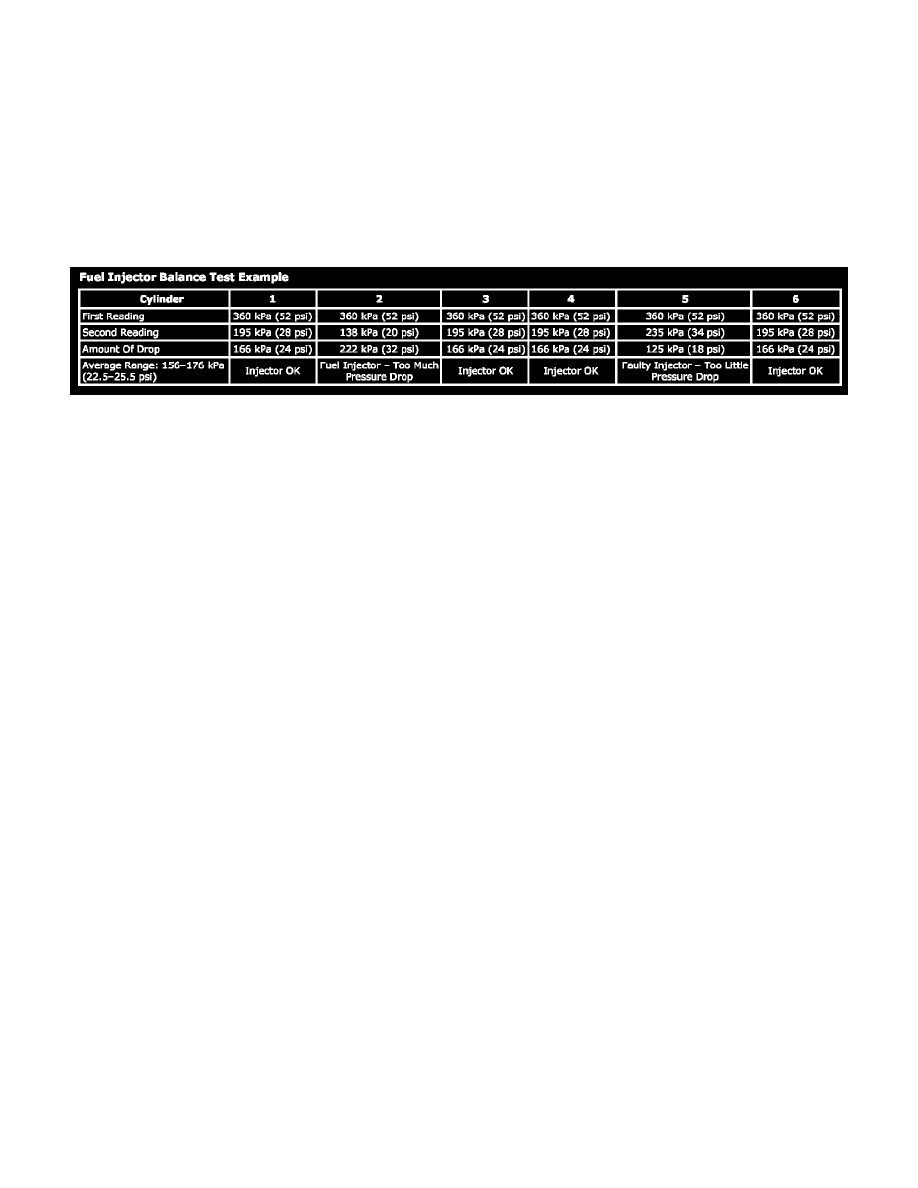XL-7 2WD V6-3.6L (2007)

Fuel Injector: Testing and Inspection
Fuel Injector Balance Test With Special Tool
Fuel Injector Balance Test with Tech 2
Diagnostic Instructions
^
Perform the Diagnostic System Check See: Testing and Inspection/Initial Inspection and Diagnostic Overview/Diagnostic System Check - Vehicle
Diagnostic Information Vehicle Diagnostic Information prior to using this diagnostic procedure.
^
Review Strategy Based Diagnosis for an overview of the diagnostic approach. See: Testing and Inspection/Initial Inspection and Diagnostic
Overview/Strategy Based Diagnosis
^
Diagnostic Procedure Instructions - Vehicle Diagnostic Information provides an overview of each diagnostic category.
Diagnostic Fault Information
Diagnostic Fault Information
Fuel Injector Balance Test Example
Circuit/System Description
The scan tool first energizes the fuel pump and then the injectors for a precise amount of time allowing a measured amount of fuel into the manifold.
This causes a drop in system fuel pressure that can be recorded and used to compare each injector.
Diagnostic Aids
^
Monitoring the misfire current counters, or misfire graph, may help to isolate the fuel injector that is causing the condition.
^
Operating the vehicle over a wide temperature range may help isolate the fuel injector that is causing the condition.
^
Perform the fuel injector balance test within the conditions of the customers concern. A fuel injector condition may only be apparent at a certain
temperature, or under certain conditions.
Special Tools Required
^
J 34730-1A Fuel Pressure Gage
^
J 39021 Fuel Injector Coil and Balance Tester
^
J 39021-210 Injector Selector Switch Box
^
EL-39021-460 Fuel Injector Test Adapter
^
J 44602 Injector Test Adapter
Component Testing
Fuel Injector Balance Test with Special Tool
1. Ignition ON, with a scan tool verify that the engine coolant temperature (ECT) is less than 94 °C (201 °F).
If the ECT is greater than 94 °C (201 °F) allow the engine to cool before proceeding.
2. Ignition OFF, install the fuel pressure gage. Refer to Fuel Pressure Gage Installation and Removal.
3. Ignition ON, verify the fuel pressure is within 380-410 kPa (55-60 psi).
If the fuel pressure is not within the specified range refer to Fuel System Diagnosis for further diagnosis of the fuel system.
4. Monitor the fuel pressure gage for 1 minute. Verify that the fuel pressure does not drop more than 34 kPa (5 psi).
If the fuel pressure decreases more than 34 kPa (5 psi) refer to Fuel System Diagnosis for further diagnosis of the fuel system.
CAUTION: Do Not repeat any portion of this test before running the engine in order to prevent the engine from flooding.
5. With a scan tool, select the Fuel Injector Balance Test function, within the Special Functions menu. Select a fuel injector to be tested and press
Enter in order to prime the fuel system. Record the fuel pressure indicated by the fuel pressure gage after the fuel pressure stabilizes. This is the 1st
pressure reading.
NOTE:
^
Repeat this step for each fuel injector in order to obtain a pressure drop value for each fuel injector.
